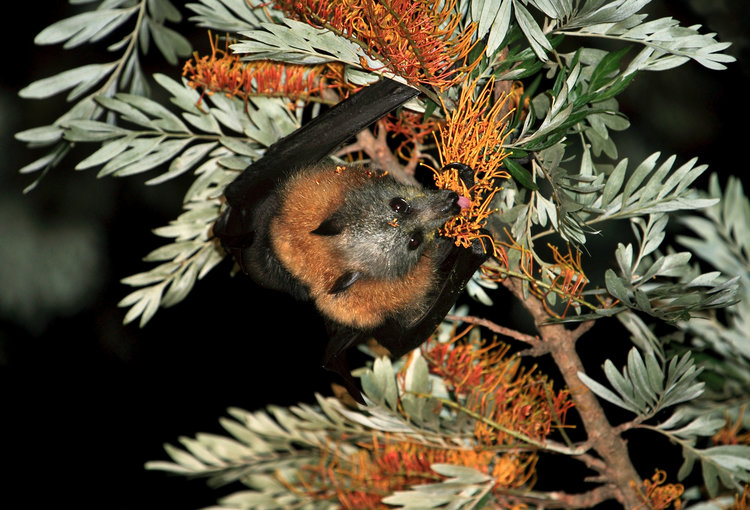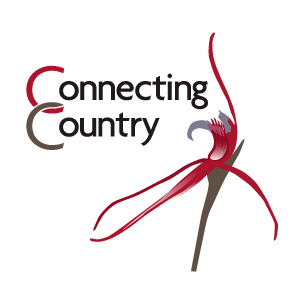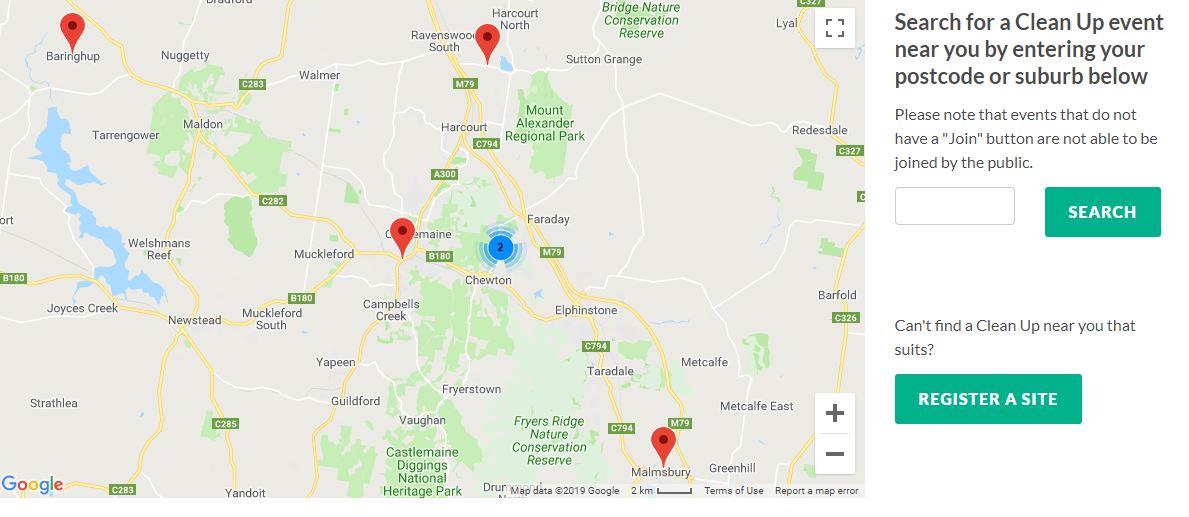Farm fencing course – 31 March 2019
Posted on 26 February, 2019 by Frances
 Beginner’s farm fencing: a hands-on course
Beginner’s farm fencing: a hands-on course
Sunday 31 March 2019 from 8.30 am – 12.30 pm in Harcourt VIC
Good fences are an essential management tool for protecting large old trees, remnant habitat and revegetation from grazing damage.
Jarrod Coote, local farmer and experienced fence-builder, is running this course for anyone who wants to repair an old fence or learn to build a new one.
A flyer is available: click here
For bookings and further information please contact Jarrod by email via info@hillsideacres.com.au
Needle grasses and native grasses
Posted on 26 February, 2019 by Ivan
Distinguishing needle grasses from native grasses
Needle grasses, in particular, Chilean Needle Grass (Nassella neesiana), are becoming serious pasture and environmental weeds in south-eastern Australia, including around the Mount Alexander region. They are very invasive and form dense infestations in pastures, bushland and roadsides. They can tolerate drought and will seed prolifically, giving them a great potential to spread and over-run existing vegetation. It has been estimated that the potential distribution for Chilean Needle Grass alone exceeds 40 million hectares across Australia.
One of the biggest challenges facing successful treatment of needle grasses is identifying infestations before they become large and dominating in the landscape. Thankfully, a local community champion recently produced an information sheet on how to differentiate needle and native grasses, titled ‘Distinguishing between needle grasses and native grasses‘. The information sheet has useful photographs and identifying features of needle grasses, and compares these features to a variety of spear grasses (Austrostipa species), wallaby grasses (Rytidosperma species) and native tussock grass (Poa labillardieri). Grasses covered include Chilean, Texas and Cane Needle Grass (all members of Nassella genus), and the closely related Espartillo (Amelichloa caudata).

Landowners learning the finer points of needle grass identification at a field day (photo by Connecting Country)
During the warmer months, needle grasses produce large amounts of unpalatable flower stalks with little leaf material, resulting in a severe reduction of stock carrying capacity. A dense infestation of needle grass can carry up to 15,000 seeds per square metre beneath infestations. These seeds can remain viable for over ten years, and can spread via livestock, machinery and disturbance.
Another helpful information sheet, ‘What to do if you find needle grass’ details first-hand experience in how best to manage these grassy weeds and prevent further spread.
Clean Up Australia Day – 3 March 2019
Posted on 26 February, 2019 by Asha
Join a Clean Up Australia Day working bee this weekend.
CLICK HERE to find an event near you, or see the map below.
Clean up Campbells Creek
Friends of Campbells Creek Landcare are also holding a Clean Up Australia Day working bee that isn’t on the map.
Date: Sunday 3 March 2019 from 9.00 to 11.00 am, followed by morning tea
Meet: Winters Flat Footbridge, Johnstone Street, (Midland Highway), Castlemaine VIC
Provided: Collection bags, rubbish skip (courtesy of the Council), tea/coffee and biscuits
Please bring: Hats, gloves, sturdy clothing, enclosed boots/shoes, sun protection, a rake if you have one, your own water, and a friend!
Visualising Victoria’s Biodiversity workshop
Posted on 21 February, 2019 by Tanya Loos
Connecting Country’s major monitoring project over the next two years is our Habitat Health Check (click here for more information), funded by the Helen Macpherson Smith Trust. This project aims to review our long-term monitoring programs, to shift to a monitoring model that empowers our community to conduct robust biodiversity monitoring, and, importantly, to ensure that the data we collect is being shared and used appropriately.
To meet this third goal, we will be working with Centre for eResearch and Digital Innovation (CeRDI) at Federation University Australia. CeRDI has developed many award-winning web-based spatial information and knowledge portals that provide public access to data sets that are often hidden from view. The team at CeRDI have two great resources that are relevant to us at Connecting Country and are well worth checking out.
State Wide Integrated Flora and Fauna Teams
Firstly, The State Wide Integrated Flora and Fauna Teams (SWIFFT) is a network for knowledge sharing and information exchange that supports conservation and management of threatened species, biodiversity and the natural environment across Victoria. You can explore a map displaying the range projects that are part of the network (click here), or see a list of their projects (click here). As part of Habitat Health Check we will be making sure that Connecting Country has a presence on this fantastic website.
Visualising Victoria’s Biodiversity
Secondly, CeRDI has developed the Visualising Victoria’s Biodiversity (VVB) tool (click here). VVB consolidates access to spatial environmental datasets and information – created and managed by government agencies, organisations, community groups and individuals – into a user friendly and interactive platform. You could use this platform to view, for example, records of mammals or birds near your property. CeRDI is one of many places for sharing and visualising nature data in Victoria – you can see a wonderful infographic on how these interact by clicking here.
Want to know more? We’ll be running a workshop with CeRDI (Date to be confirmed) to learn about the power of the Visualising Victoria’s Biodiversity tool.
More information to come soon – watch this space!
Climate impacts for Maldon community – presentation 28 February 2019
Posted on 20 February, 2019 by Frances
Maldon Neigbourhood Centre is holding an event to help the community understand the local impacts of a changing climate.
Understanding climate impacts in our local community
When: Thursday 28 February 2019 from 7.00 – 8.30 pm
Where: Maldon Neighbourhood Centre hall, corner Church St and Edwards St, Maldon VIC
RSVP: (03) 5475 2093 or info@maldonnc.org.au
For further information please see the event flyer below.
Bird walk at Bald Hill – 2 March 2019
Posted on 20 February, 2019 by Frances
 BirdLife Castlemaine District Branch, together with Friends of Bald Hill Reserve, are running a special bird walk at Bald Hill near Kyneton VIC. Bald Hill Reserve is a unique and beautiful place, with three distinct habitat types. The Friends group have achieved much through encouraging the public to appreciate its natural significance and on-ground works.
BirdLife Castlemaine District Branch, together with Friends of Bald Hill Reserve, are running a special bird walk at Bald Hill near Kyneton VIC. Bald Hill Reserve is a unique and beautiful place, with three distinct habitat types. The Friends group have achieved much through encouraging the public to appreciate its natural significance and on-ground works.
Carolyn from the Friends group will share her incredible local knowledge, making this an event not to be missed.
Bald Hill bird walk
When: 2 March 2019 from 8.30 am
Meet: 8.30 am at Bald Hill Reserve, or if car pooling from Castlemaine meet at 7.45 am at Castlemaine Community House (former Continuing Education building), 30 Templeton St, Castlemaine VIC
Where: Bald Hill Reserve, Mt St Marys Lane, Kyneton VIC (approach Mt St Marys Lane from the south, off Pipers Creek St, and Bald Hill Reserve is well sign posted on your left)
Bring: Please wear long trousers and sturdy shoes as snakes may be out and about. Bring sun protection including a hat, and plenty of water.
Walk leaders will be Jane Rusden and Carolyn Robb.
Find out more about Bald Hill Reserve here: http://www.friendsofbaldhillreserve.com.au/
New Landcare stories booklet available
Posted on 20 February, 2019 by Asha
Readers of our local Midland Express newspaper in 2018 were treated to a series of ‘Landcare stories’, published each month as part of Connecting Country’s ‘Nature News’ series. These stories are now available to read in electronic format (as pdf file), or as a printed booklet. Click here to download the file, or drop in to the Connecting Country office for a hard copy.
There are nine stories, titled:
- Historic gum trees of Maldon
- The birth of the Cactus Warriors!
- A tiny frog inspires land restoration
- Barkers Creek gets beautiful
- From tip to bushland: Sandy Creek Landcare success
- Helicopters to the rescue
- A cup of tea to care for Jim Crow Creek
- A community cares for Campbells Creek
- The restoration of Taradale Landcare
The stories were jointly written by Sarah Edwards and Landcare volunteers between 2017 and 2018, and edited by Connecting Country. This followed a series of interviews between Sarah and local Landcarers, who included Bev Phillips, Lee Mead, Christine Kilmartin, Daryl Colless, Lois Larkman, Christine Brooke, Maurie Dynon, Thea King and Brian Bainbridge. They cover a small portion of the work done by Landcare and Friends groups in the Mount Alexander region of central Victoria.
Thank you to all who dedicated time to put these together and help share some of the many Landcare stories out there.
Australia’s great wildlife migrations talk – 31 March 2019
Posted on 20 February, 2019 by Frances
Australia’s great wildlife migrations: restoring habitats for nomadic nectar-feeding birds and bats
Biolinks Alliance is excited to be hosting leading conservation biologist, Dr Peggy Eby for her public address in Bendigo. Her ground-breaking research reveals the story of Australia’s unique, but little-known, wildlife migrations of nectar-feeding birds and bats. These animals fly vast distances tracking nectar-rich bushlands as they flower.
Hear why Grey-headed Flying foxes have come to take up residence in cities like Bendigo and Melbourne, why one in four of our woodland bird species are threatened, and how you can be part of the solution in central Victoria.
 When: Sunday 31 March 2019 at 2.30-3.30 pm, doors open 2.00 pm
When: Sunday 31 March 2019 at 2.30-3.30 pm, doors open 2.00 pm
Where: Banquet Room, The Capital, 50 View St, Bendigo VIC
Tickets: $10 for non-members OR free for members of Biolinks Alliance member organisations (which includes Connecting Country members) and Biolinks Alliance Associate Members
To book or find out more visit: www.biolinksalliance.org.au/peggyeby
Camp Out on the Mount 2019
Posted on 14 February, 2019 by Asha
It’s that time of year again! Details of the sixth Camp Out on the Mount are now available and registrations are open. Please join Connecting Country, Little Habitat Heroes and local Landcare groups to celebrate the beautiful Leanganook (Mount Alexander) and the fabulous work that Landcare and Friends groups do all year round.
This free event is supported by funding from the North Central Catchment Management Authority through the Victorian Landcare Program, as well as Mount Alexander Shire Council, Friends of the Box-Ironbark Forests, and Little Habitat Heroes. We will have guest presenters from Dja Dja Wurrung Clans Aboriginal Corporation, Parks Victoria and Bendigo TAFE, along with local authors and artists. Yummy food will also be provided by the Harcourt Lions Club, Murnong Mummas, and the Camp Out Damper Team.
CLICK HERE to visit the booking website
CLICK HERE to download the flier
When: Saturday 6 – Sunday 7 April 2019
Where: Leanganook Camping Ground, Joseph Young Drive, Mount Alexander Regional Park, Faraday VIC
What to bring: Camping gear and supplies, food for Sunday breakfast, gold coin donation or Saturday night BBQ, weather-appropriate clothes, sturdy shoes and sun protection.
Below is a run-down of the Camp Out on the Mount 2019 program. You are more than welcome to attend some or all of the activities. Please let us know through the booking website which activities you plan to attend, as this will help us in planning how many people to cater for.
If you have any questions, please call Asha on (03) 5472 1594 or email asha@connectingcountry.org.au
Please note: activities will be cancelled in the case of severe weather.
SATURDAY 6 APRIL
5:30 pm Welcome to Country
6:00 pm Lions Club BBQ and damper (gold coin donation)
7:30 pm Night walk with Parks Victoria ranger
OVERNIGHT CAMP OUT (BYO camping gear and supplies)
SUNDAY 7 APRIL
9:30 am Bus down to Old Silk Worm Farm site
10:00 am Welcome and morning tea
10:30 am Panel of local experts talk about the Mount, including Rebecca Phillips (Dja Dja Wurrung Clans Aboriginal Corporation), Terri Williams (Bendigo TAFE), and Ian Braybrook and Marilyn Bennet (authors of ‘Sarah’s search – A silk odyssey’), facilitated by George Milford
11:30 am ‘Seeds that grow’ song performed by Eva Popov
11:45 am ‘Make you own native seed balls’ activity
12:30 pm Bus back to camp site
Hazard to cyclists – Caltrop weed
Posted on 13 February, 2019 by Frances
Caltrop (Tribulus terrestris) is a Regionally controlled weed in the North Central Catchment. It is also known as bindii, cat’s head, goat’s head or yellow vine. It is a flat, summer-growing, annual herb with yellow flowers.
The fruit of caltrop is a woody burr with sharp spines. This burr can puncture bike tires, making it particularly annoying for cyclists. It can also puncture human skin, and injure the feet, mouth and digestive system of animals. Burrs are easily picked up and spread by vehicle tyres, shoes, animal feet and other objects.
Caltrop has been observed growing in Castlemaine. A small and committed band of volunteers are helping to keep it under control. Margaret Panter developed a poster (click here) to raise awareness about this prickly weed.
How to prevent Caltrop becoming widespread in Castlemaine:
- Avoid infested areas (see map here), as walking, riding or driving through them spreads seeds to other areas.
- Pull or cut out plants before they drop their prickles.
- Report new infestations to Mount Alexander Shire Council.
- Check shoes and tyres for prickles before leaving an infested area.
- Destroy seeds or put in a secure bag in the bin.
The Wombat Forest’s Owls and Gliders – 8 February 2019
Posted on 6 February, 2019 by Tanya Loos
The first speaker for the Castlemaine Field Naturalists Club in 2019 is Gayle Osborne.
Gayle has been involved with Wombat Forestcare for many years and will present a talk titled ‘Fauna surveys in the Wombat Forest’. Gayle will describe the group’s motion-sensing camera projects, searches for Powerful Owls and spotlighting for Greater Gliders. She will explain why entering data on the Victorian Biodiversity Atlas is essential for conservation. Gayle will also mention the new fungi app and who to contact for more information.
For a preview of the Wombat Forest Greater Gliders, read the latest issue of the Wombat Forestcare newsletter here.
Fauna surveys in the Wombat Forest – talk by Gayle Osborne
When: Friday 8 February 2019 at 7.30 pm
Where: Fellowship Room behind the Uniting Church Hall on Lyttleton St, Castlemaine VIC (next door to the Castlemaine Art Museum)
Members and visitors are all welcome and there is no cost for entry.
Everyone is also welcome to attend an excursion on the following day (Saturday 9 February 2019). Meet at the Octopus building on Duke St, Castlemaine VIC (opposite the Castle Motel) ready for a 1.30 pm departure. Please bring afternoon tea. Car-pooling will be available.
Act now for Rabbit Buster Month
Posted on 5 February, 2019 by Asha
February marks ‘Rabbit Buster Month’. This successful campaign began in the 1990s and continues to serve as a reminder to plan for and act on rabbit control.
Rabbit monitoring
It’s easy to observe when rabbit populations are high as damage is noticeable, but it can be hard to know when populations are building. Ensuring rabbits have minimal impact within a specific area requires regular monitoring. If rabbit numbers reach unacceptable levels, immediate control actions are required.
Useful rabbit monitoring techniques that landholders can implement on their own properties are described in the following documents:
Rabbit control
If rabbit numbers reach levels which require control, an integrated approach using a range of techniques usually works best. Methods can include fumigation, shooting, baiting using pindone, ferrets, warren ripping and netting. Most of these techniques require specialist practitioners with appropriate licences and accreditation, with their associated equipment and other costs.
A cost-effective way for landholders to get started with rabbit control is to establish one or more rabbit bait stations, using an oat bait with pindone poison as the active ingredient. Your local rural supply merchant can supply this product and advice.
Click on these links for useful information for setting up your own bait station:
- Connecting Country Instructional Video 1: How to make a rabbit bait station
- How to use rabbit bait stations effectively
- Bait stations and rabbit control
However, the most effective rabbit control uses a range of techniques and constant vigilance. The good news is that even the most rabbit-affected properties can be brought under control, and the rabbit numbers maintained at very low levels.
Rabbit biocontrol
Rabbit biocontrol, such as introduction of a rabbit virus, can be most beneficial if applied as part of an integrated and complementary pest management approach. Here are some statistics about the release of a new rabbit virus (from the February 2019 North Central Chat newsletter):
- The RHDV1 K5 rabbit virus was officially released at 382 locations nationwide.
- Sites included 373 community-run release sites and nine intensively monitored releases sites.
- Some sites did not progress due to low rabbit numbers, timing or poor weather conditions.
- 42% of sites recorded a reduction in rabbit numbers post-release (based on data from 191 release sites).
- Through laboratory analysis, RHDV1 K5 rabbit deaths were confirmed in every state and territory, except the Northern Territory.
Further information
If you would like a hard copy of Connecting Country’s ‘Ute Guide to Rabbit Control’, contact our office on (03) 5472 1594 or email info@connectingcountry.org.au
To visit the Victorian Rabbit Action Network website, click here
To download the February 2019 North central Chat, which includes a Rabbit Buster Month feature, click here
To download a copy of Connecting Country approved contractor list, click here










